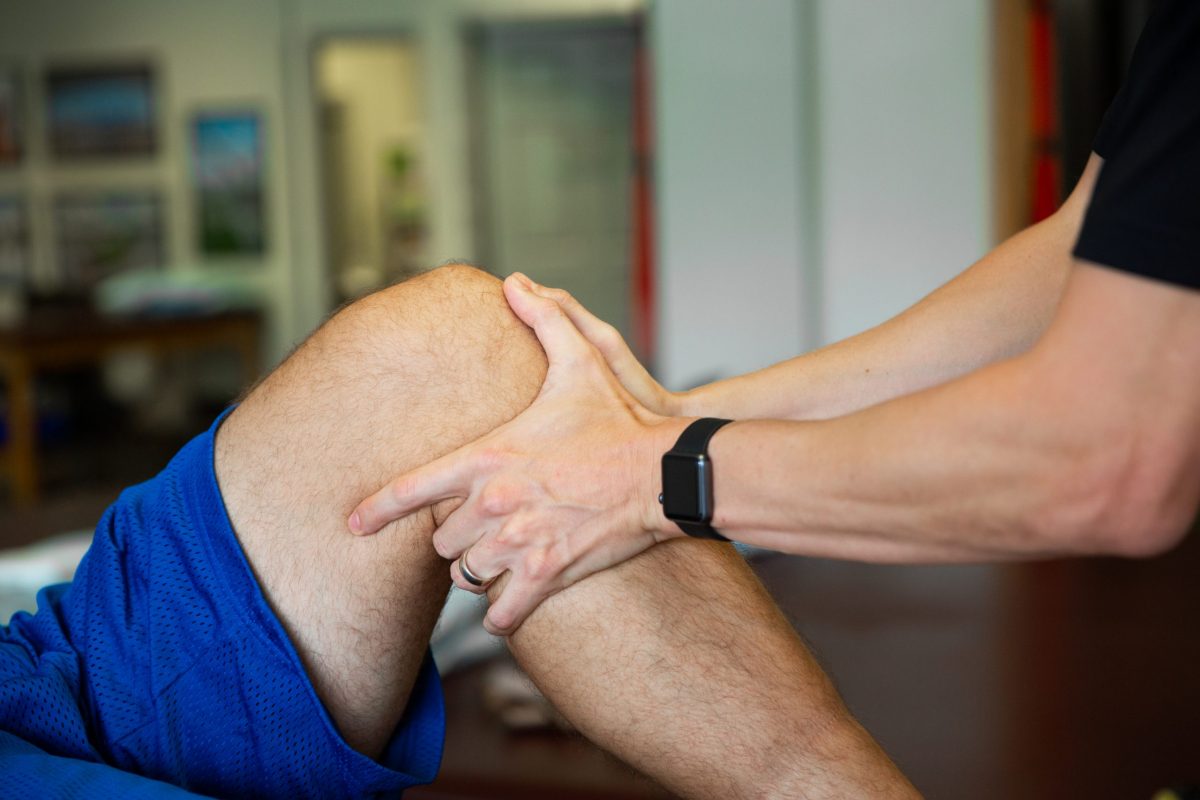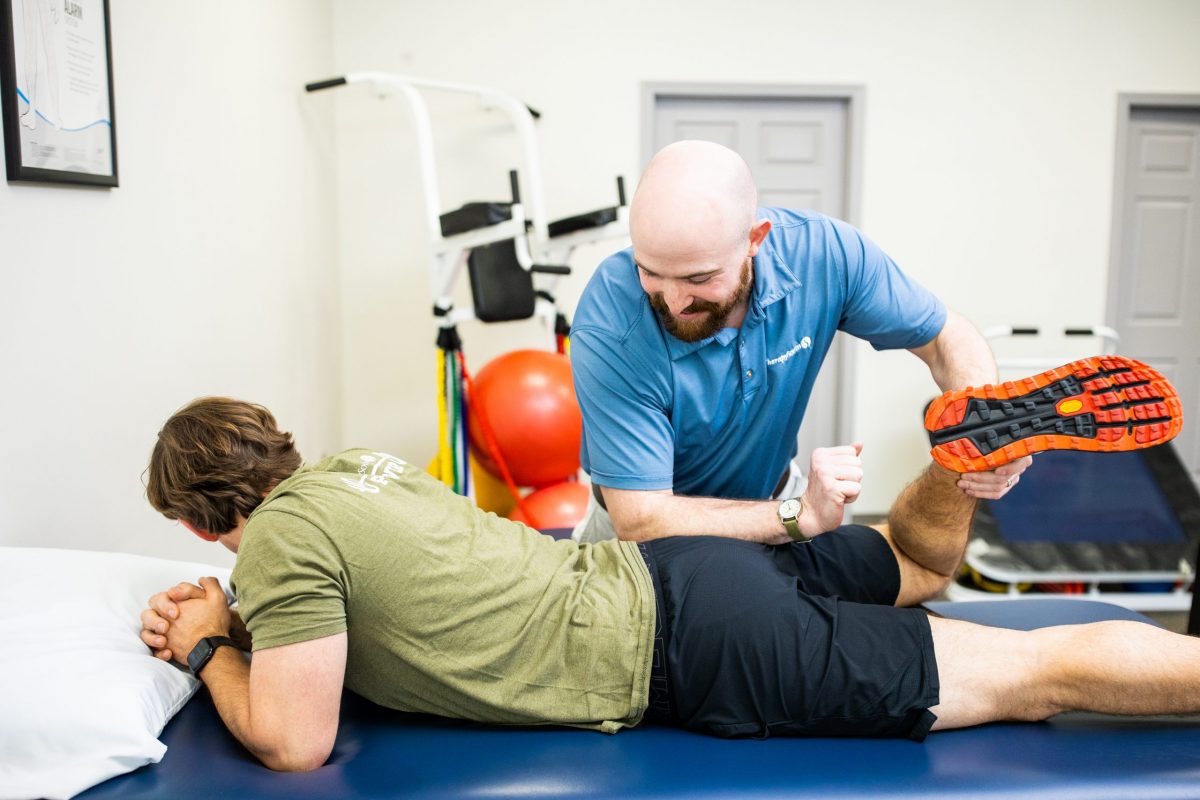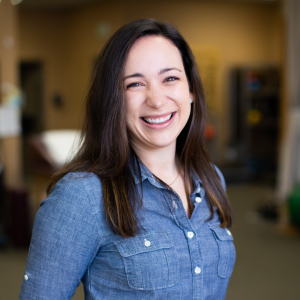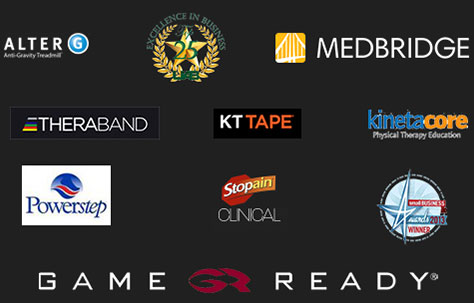Featured Therapist: Morgan McNeill, PT, DPT
At some point in our lives, we all experience knee pain. Maybe the porch steps start to become troublesome, or it seems more difficult to make it through the grocery store without feeling pain and fatigue in the knees.
While the knee is a stable joint, capable of holding us up and moving us through daily life, it was not created to last forever. Thirty-three percent of people ages 63 to 94 are affected by the onset of osteoarthritis (OA) in the knee joint each year. Depending on the severity and progression of OA, symptoms can include pain, stiffness, swelling, creaking, and popping in the knees, and tenderness around the knee joint. These symptoms can lead to limitations in functional activities, such as walking, standing, rising from a chair, and climbing steps. If left untreated, knee OA can result in further damage to the knee joint, increase the need for pain medication, and potentially lead to surgical joint replacement.

To avoid replacement surgery
While knee joint replacements are common and often necessary, surgery is not the only choice of treatment for knee OA. Skilled physical therapy and exercise programming have both been found statistically effective in decreasing pain and improving function in individuals experiencing knee OA. Physical therapists are medical professionals who specialize in human movement. They are trained to treat movement dysfunctions and have much to offer regarding knee pain. In fact, studies have shown that 70-90% of individuals experiencing knee OA who participated in physical therapy treatment were able to avoid or defer surgical joint replacement. These studies suggest that physical therapy is an effective alternative treatment for knee OA for individuals who would prefer to prevent surgery.
To stay active and mobile

Manual Therapy
The National Institute for Health and Care includes manual, or “hands-on”, therapy to also be effective in treating knee OA. Manual therapy is provided by a skilled physical therapist and includes gentle mobilization of the knee joint, massage and stretching of the surrounding muscles to increase mobility and flexibility.

Aerobic exercise
While using treadmills, bicycles, or ellipticals at a gym or rec center is a common way to facilitate this kind of exercise, a simple walking program in the neighborhood or around the mall will work as well.

Strength Training
Strength training for the muscles around the knees, hips and ankles is also effective in decreasing pain and increasing function in individuals with knee OA. Physical therapists are skilled in designing appropriate strength training programs, adjusting resistance and repetitions to challenge each person’s ability safely and effectively.

Stretching
Maintaining good flexibility in the muscles around the knees is important for ensuring maximum mobility. Stretching should be performed three to five days per week and individuals can be guided in stretching techniques as part of their physical therapy treatment.

To live a longer, healthier life
As the body ages, it becomes even more important to make strength and mobility a priority, and to take care of all the parts and pieces that allow us to move and participate in daily activities and hobbies. Exercise, healthy eating, and establishing a home team of trusted medical professionals to assist with managing pain and meeting goals are great ways to prioritize healthy living and maximize function.
Whether it is knee OA, back pain or trouble with balance, physical therapists are uniquely situated to provide conservative, collaborative treatment to decrease pain and improve function.
At TherapySouth, you have a team of educated and experienced therapists to help you reduce pain and increase mobility. Our goal is to help patients return to their favorite activities, pain-free. Schedule an appointment at a clinic near you to get started on your journey toward wellness.
Morgan graduated from Vanderbilt University in 2015 with a B.A. in Medicine, Health & Society. She earned her Doctorate of Physical Therapy from UAB in 2018. Morgan has been a Pelvic Health Practitioner since 2020 and is also interested in treating lumbar spine and athletes of all ages. Outside of work, Morgan loves to spend time with her husband, Dan, and dog, Moose. Her hobbies include reading, baking and entertaining friends and family. Come see Morgan at our Bessemer/McCalla clinic for all your physical therapy needs.







